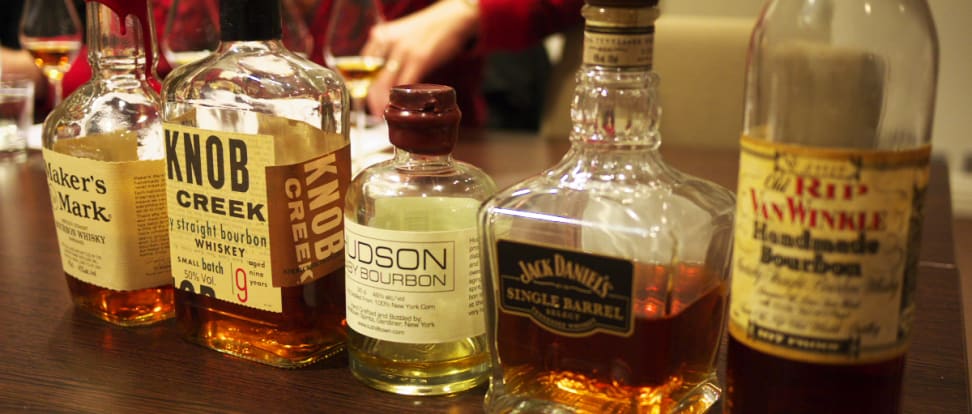Whiskey's Popularity May Be Bad News for Bourbon Fans
Demand for U.S. whiskey is at an all-time high, and distillers say there's not enough to go around.
 Credit:
Credit:
Recommendations are independently chosen by Reviewed's editors. Purchases made through the links below may earn us and our publishing partners a commission.
Blame the new urban bartenders, those pretentiously mustachioed hipsters who’ve sold us on shifting our taste buds upmarket. While once we contented ourselves with a margaritas made from glow-in-the-dark mixers, in today’s cocktail culture we fetishize Manhattans sourced from Brooklyn’s craft distilleries and top them with artisanal, organic cherries.
The result? Sales of American whiskeys are on a tear. According to the Distilled Spirits Council, last year domestic sales increased 10.2 percent, taking both bourbon and other whiskies into account.
And now bourbon makers are telling us there’s not enough to go around.
“While [whiskey] growth had been picking up over the last few years, 2013 was a banner year,” explains Distilled Spirits Council Chief Economist David Ozgo.
Overseas, sales of American spirits overall are also surging, thanks in part to reduced trade tariffs. The Distilled Spirits Council credits a “global whiskey renaissance” for driving U.S. booze sales.
However, it’s specifically bourbon supplies that may be imperiled. And while all bourbons are whiskeys, not all whiskeys are bourbon.
We are the barfly in the ointment
For those of us who like to lead a lush life and embrace bourbon in particular, this news could be a real concern. While a sudden increase in demand for beer could be dealt with by quickly increasing production, quality bourbon takes years to produce. And the relatively swift increase in sales over the last half-decade has caught the industry by surprise.
Bottom line: We’re consuming bourbon faster than it can be re-stocked, since what’s being bottled today isn’t what was produced yesterday—it’s what was put in the pipeline six to 10 years ago.
The industry is scrambling to address the supply constraints. Maker’s Mark floated and then quickly backed off from a plan to dilute alcohol content and stretch its supplies—a move that would have seemed particularly crass in the face of its 17-percent rise in sales in 2013. Other bourbon makers are experimenting with shortcuts to accelerate the aging process.
But watering down existing bourbon supplies to pad the inventory or using chemical voodoo to speed the processes are solutions unlikely to be embraced by the aficionados who are driving the whiskey renaissance.
Has it really come to bourbo-geddon?
Possibly, though it's hard to be certain since actual supply numbers are not exactly public record. The Spirits Business says a harsh winter that created a shortage of new American oak barrels is the primary culprit, and the problem will take another 12 to 24 months to play out.
Still, some brands are dishing out specifics. Boutique distiller Buffalo Trace made us sit up and take notice with a press release that claimed the company is around “100,000 bottles short” of where it should be. Let the hoarding commence!
Looking at it from the investor’s angle, Motley Fool suggests that this is just another stage in whiskey's age-old boom-and-bust cycle. “Distillers are laying in more product today than ever before, but since the product takes time to age, that means we'll have something of a glut in 10 years, but we'll still see skyrocketing prices for aged and super-premium whiskies over the next five,” the Fool writes.
So maybe it’s time for a breather in our long-term affection for bourbon. We’ve taken a liking to ti’ punch made with old rum, Martinique-style. Perhaps a little fling with bourbon’s elegant Caribbean cousin is in order?
Hero image: Flickr user “Rollofunk” (CC BY 2.0)

